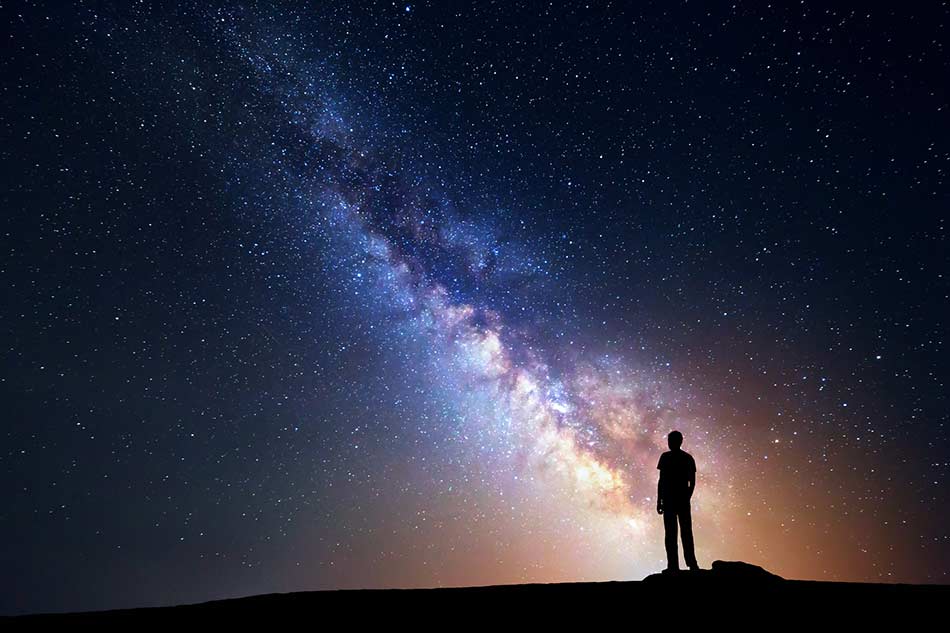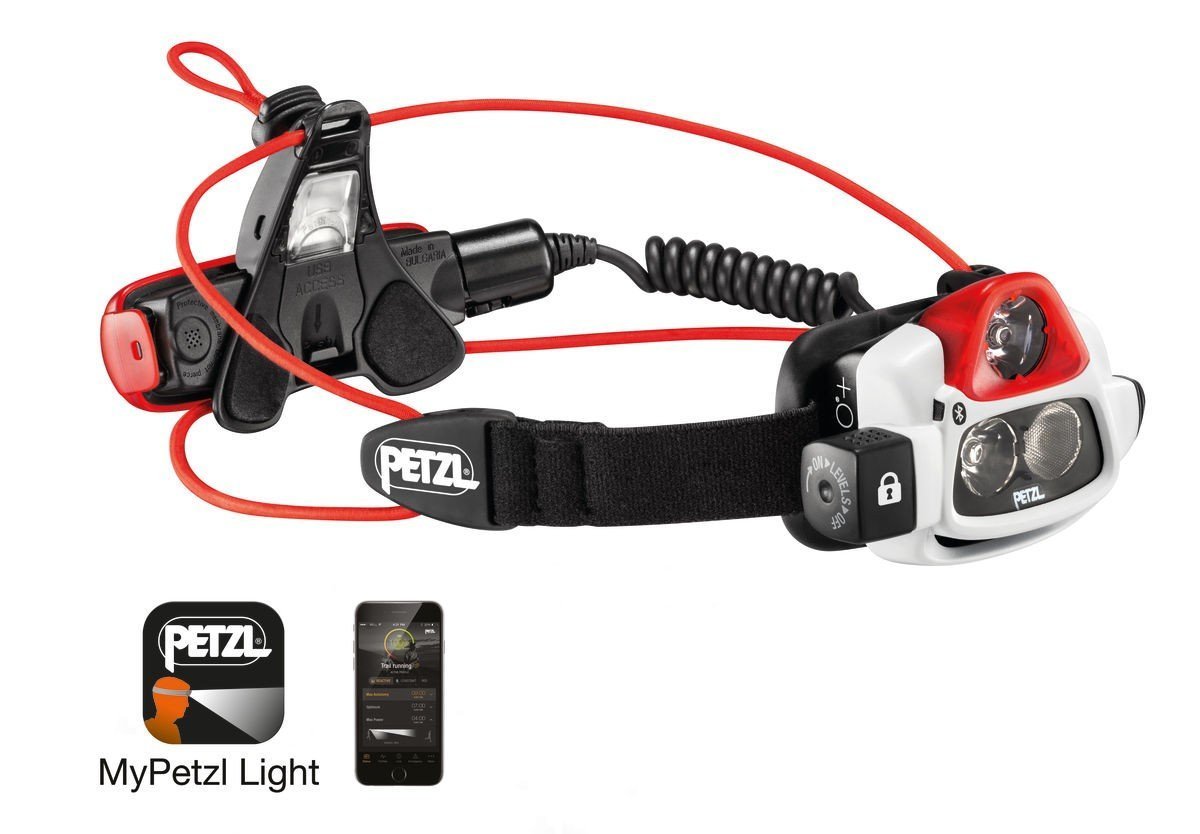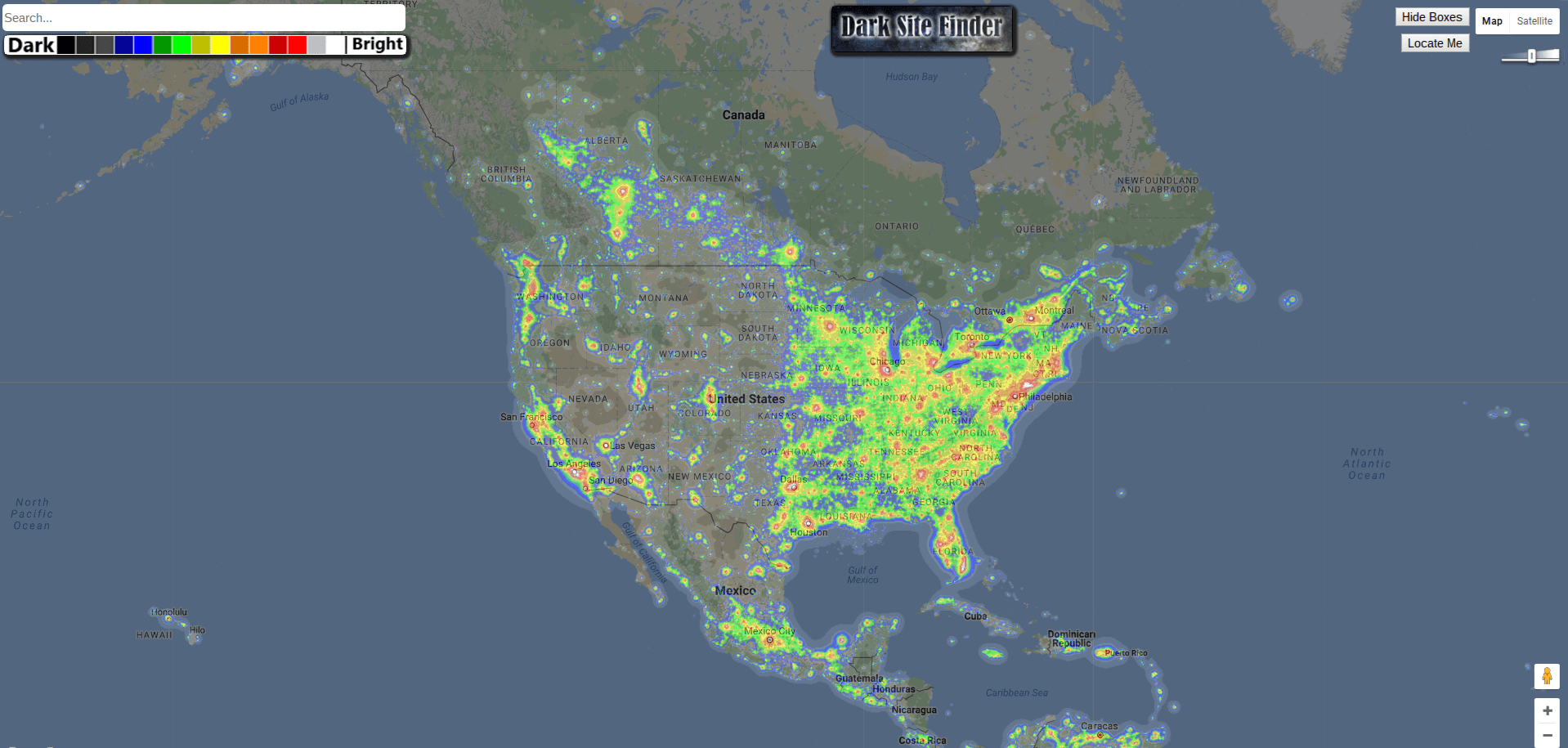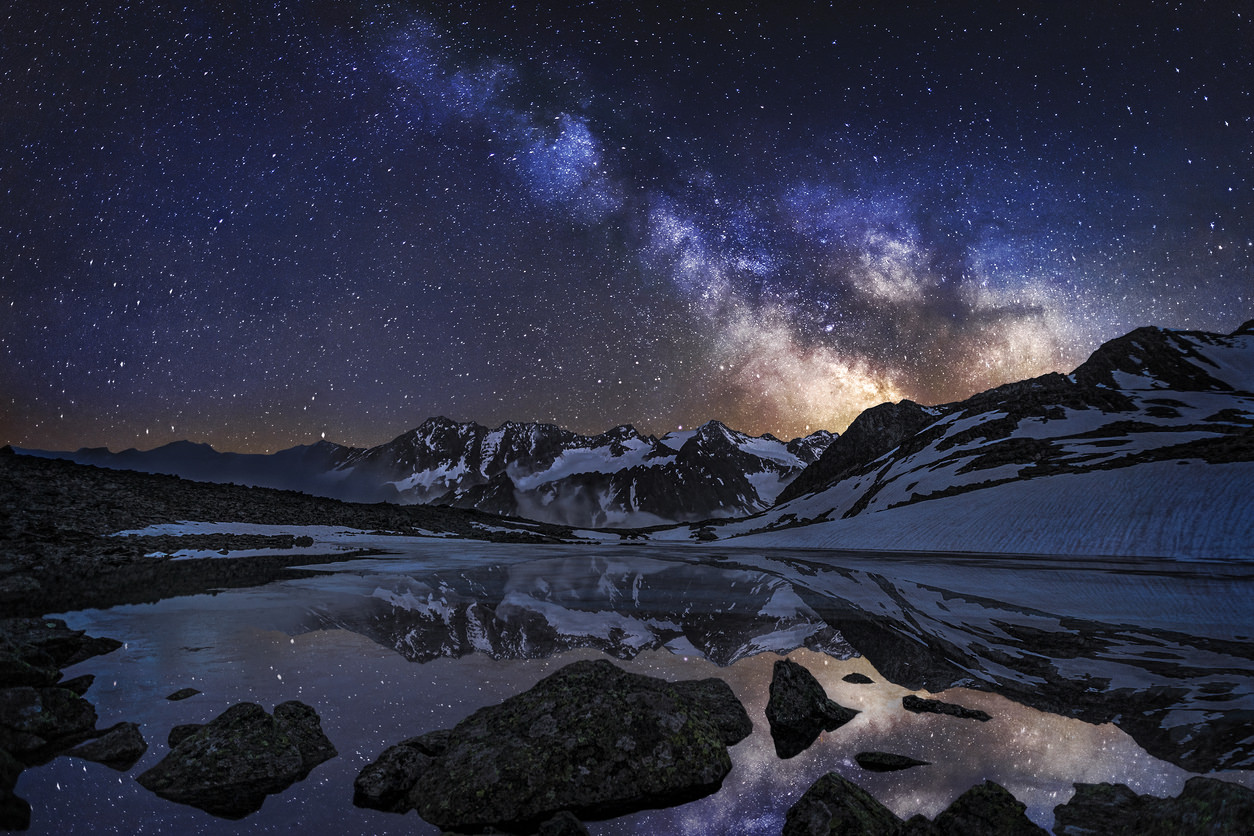When you see a photo like the one above, it's hard not to think "Wow, that must've been complicated!"
It's such a gorgeous shot, so it must have required tons of time and effort, right?
Well, the answer to that question is actually yes. It did take a lot of time and effort.

However, it's not difficult to do. There's no special hard-to-understand formulas for getting great photos of the Milky Way.
All it comes down to is planning the shot, executing the shot, and editing the shot.
That's what you'll learn how to do in this tutorial.
Let's get started!
Planning the Shot
Get the Gear

One of the misnomers about Milky Way photography is that you have to buy all sorts of expensive gear to get a good shot.
Sure, fancy astrophotography gear is nice to have, but it isn't necessary.
In fact, you can get great photos of the Milky Way with an entry-level DSLR, a kit lens, and a sturdy tripod.
No...seriously!
So, as long as you have a DSLR or mirrorless camera, a lens, and a tripod, you can proceed.
However, if you want improved results, get a better lens, like a wide-angle prime lens with a wide maximum aperture of f/2 or greater.
Why?
The larger the aperture, the more light the lens can collect, and the more light it can collect, the lower the ISO setting you can use.
Since higher ISO values are associated with increased digital noise, minimizing the ISO will be helpful in getting clearer, sharper Milky Way Images.

You also want to have a solid headlamp that will help you find those out-of-the-way dark locations for the ultimate in night sky photos.
I personally use the Petzl NAO + Headlamp, and I couldn't be happier with it!
Not only does it pump out 750 lumens, it's got smartphone connectivity so you can closely monitor how much burn time the lamp has left on its current charge.
On top of that, the NAO + can analyze the ambient light around you and adjust its brightness for the situation instantaneously.
That feature is handy for both extending the life of the battery and giving you the precise amount of light that's called for in every situation.
I use this thing to illuminate dark hikes in the dead of night, but it can also be used to light paint the foreground of your images for truly dramatic shots.
If you want to maximize your time shooting photos of the Milky Way, get a solid headlamp like this one to help you out!
Find a Location

Ideally, you'll be able to get away from the bright lights of the big city to take your Milky Way photos.
By reducing the light pollution, you increase the impact of the stars in the sky. That's a good thing.
To find the darkest skies, use something like Dark Site Finder shown above, which allows you to search for locations and examine the light pollution in that area.
Another thing to consider is if you want a foreground, midground, and background in the shot.
On the one hand, having foreground and midground elements helps give Milky Way shots some context. That is, with the Milky Way extending over a landscape feature like a mountain range, you can more easily show off the size and scale of the Milky Way.
However, this isn't required. If you want your shot of the Milky Way to be just of the stars, all you'll need is a dark spot to setup your gear.

Keep in mind that in the northern hemisphere, the Milky Way is at its finest in the summer months. Also keep in mind the position of the Milky Way, the stars, and the moon in the sky, as well as when the sun sets at your desired location.
You can get all that information by using the Photographer's Ephemeris, shown above.
Another handy tool to use when planning your Milky Way shots is Stellarium.
Stellarium is handy because it tells you where the Milky Way will appear in the sky relative to your location.
Just enter your location and the time of day you'll be there, and it will show you the view you'll see. Pretty cool, huh?
Quick Tip: If you shoot the Milky Way about an hour before the moon sets, you can get a nice glow of the landscape elements to add additional visual punch to your photo.
Taking the Shot
Figure Out the 500 Rule

The 500 Rule is an astrophotography trick that allows you to avoid having star trails in your photos.
When photographing the Milky Way, you want it to be the highlight of the shot - not the stars as they appear to move across the sky. Thus, the 500 Rule is needed.
Essentially, the 500 Rule allows you to calculate the shutter speed you can use to avoid star trails.
This is done by dividing 500 by the focal length of your lens.So, for example, if you're using an 18-55mm kit lens, and you're shooting at 18mm, you simply divide 500 by 18 to get your longest shutter speed. In this case, that's 28.8 seconds.
So, for example, if you're using an 18-55mm kit lens, and you're shooting at 18mm, you simply divide 500 by 18 to get your longest shutter speed. In this case, that's 28.8 seconds.
That figure works if you're using a full frame camera. But if you're using a crop sensor camera, there's another step.
Crop sensor cameras have smaller sensors, which increases the effective focal length of the lens. On Canon cameras, the crop factor is 1.6x. On Nikon cameras, the crop factor is 1.5x. So, if you're shooting with a Canon crop sensor, you have to multiply the focal length - 18 - by 1.6, which results in 28.8. Then, divide 500 by that figure, which results in 17.4 seconds. That's the maximum shutter speed you can use to avoid star trails in that situation.
Dial in the Settings

Though each situation is a little different and you might need to tweak some of these settings, this is a good baseline from which to start:
- Shutter speed: 15 seconds
- Aperture: As large as possible
- ISO: 1600
- Exposure mode: Self-timer
- File format: RAW
- White Balance: Auto
- Image stabilization: Off
Quick Tip: Focusing at night will be nearly impossible because your camera needs light contrast to focus on the subject. As a result, it's a good idea to pre-focus during the daytime before you head out. You can do this simply by selecting an object far away, focusing on it, and locking the focus by using gaffer tape to secure the focus ring in place. Also switch the lens to Manual Focus. That ensures you're focused at infinity, which will get you the sharpest images of the Milky Way, and your lens won't try to acquire focus on its own once you're out shooting.
Take the Shot

Now that you've got everything planned out, you're at your desired shoot location, and you have your gear set up with your settings ready to go, all that's left is to take the shot.
Simply take the first exposure, and have a look at it on the camera's LCD. Check for composition and framing, but sharpness as well.
If you find that the image is too dark or too bright, adjust the shutter speed as needed.
Remember, in our scenario, we're using a kit lens at a shutter speed of about 17 seconds. Many cameras don't have that specific shutter speed, so you might have to choose between 20 seconds and 15 seconds.
Naturally, if you choose 15 seconds and the image is too dark, try 20 seconds. If you start at 15 seconds and it's too bright, try 10 seconds.
The point is that there will be some trial and error to get the best exposure. Just keep with it and be patient, and you'll eventually get the desired results.
See the complete process outlined in this article in the video above by Roy Dufek with The Finer Photo. He offers these step-by-step guidelines with even more detailed instructions to help you get the best Milky Way photos possible.
Edit the Shot
You can edit your Milky Way photos in Photoshop, Lightroom, GIMP, or any other number of post-processing programs.
Naturally, the process of editing your photos will vary depending on the program you prefer.
What you will find regardless of the program you use is that the initial photo will likely be quite dark. But don't worry, you can fix that.

Here's a few things you might want to work on in post-processing:
- Increase the exposure to bring out the detail of the Milky Way
- Increase the highlights and white values in the image to further extract detail from the Milky Way
- Darken the sky surrounding the Milky Way by decreasing the black values and shadows
- Adjust the tone curve to bring out even more highlights and bring down even more shadows
- Reduce noise in the image by increasing the luminance
- Reduce chromatic aberration with lens correction
There are lots of other handy tools you can use in post-processing to bring out the little details in your Milky Way photos and complete your Milky Way adventures.
For an in-depth Lightroom CC tutorial, check out the video below by Rob & Jonas' Filmmaking Tips: